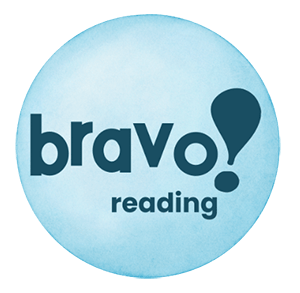Reading Success: It’s All About Decoding In Reading!
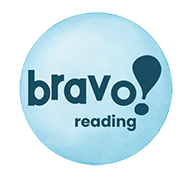
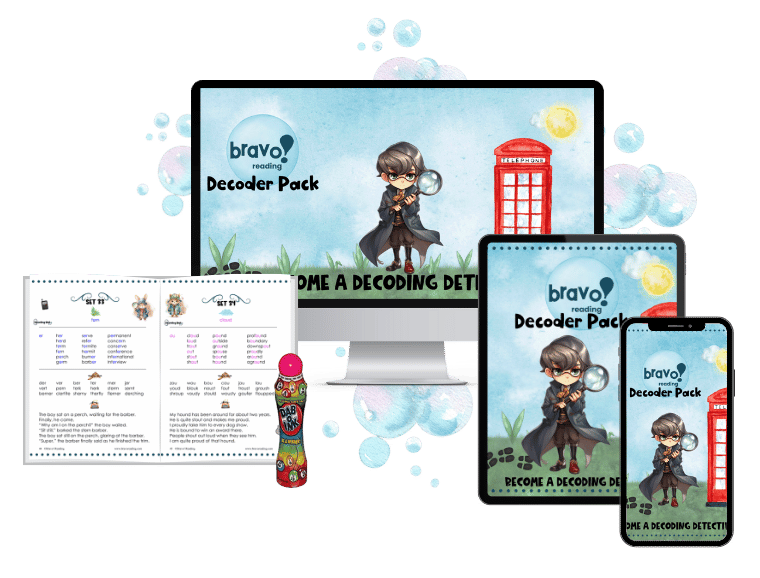
Decoding in reading. It seems easy enough.
At least to you and me.
But to a kid with dyslexia, it can be a heart breaker. It can cause panic and fear and a whole bunch of horrible feelings.
We’ve all panicked when coming across a word we don’t know.
But can you imagine panicking every time?
Can you imagine not having any real strategies when it comes to decoding words?
Kids with dyslexia face this every day of their lives.

Sounding out words, or decoding in reading, is the true backbone of reading. It is the process of translating letters as coded symbols into words that have meaning.
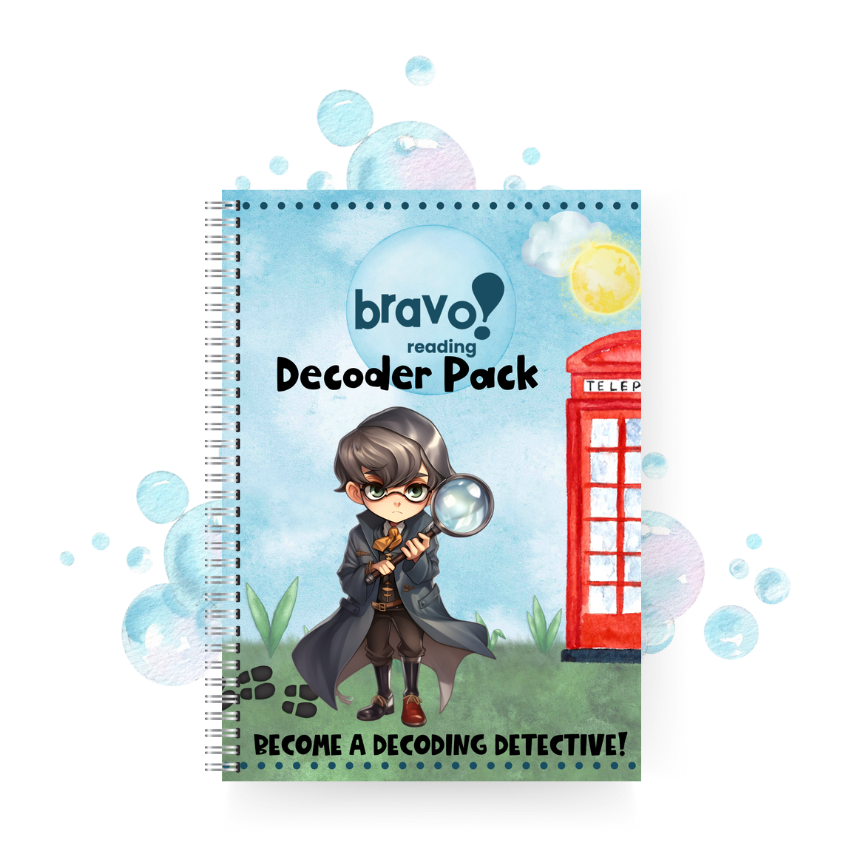
Simply put, it’s how your child sounds out words when reading. Decoding in reading is one of the most important skills your child can have for reading success!
Without proper decoding skills in reading, your child will resort to guessing at words, which causes a lot of problems. When this happens, text is read incorrectly, which directly affects reading comprehension – the ability to understand what was read.
If your child is guessing at words while reading, it changes meaning since words are read incorrectly. Questions can’t be answered correctly because the original information is skewed. This is when reading scores drop, when tests are failed.
The Big Fluency Debate: How Decoding in Reading Steers The Ship
Without excellent decoding skills in reading, fluency takes a hit as well. Fluency is your child’s ability to read with proper speed, accuracy, and expression.
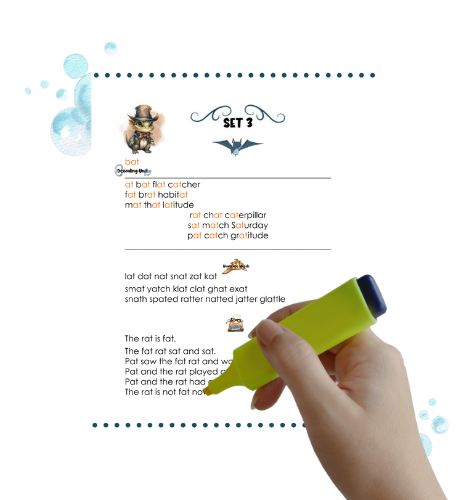
When your child has weak decoding skills, it’s difficult to read with proper speed and accuracy.
If this is the case, your child’s oral reading will be slower than other children’s. Words are tripped over.
Stammering, sputtering, and stuttering are the norm instead of blending letters together to smoothly form words.
It’s a long, drawn-out process.
Give Your Child Reading Confidence Now!
But even worse, your child’s self-esteem and self-confidence suffer because of poor decoding skills. Reading out loud in front of others becomes embarrassing.

Sometimes, even teasing or bullying can happen.
Grades suffer as an entire spiral of academic failure occurs. Tests aren’t passed. Doing simple homework assignments becomes a battleground. Even family life suffers.
Learning to read and refining existing reading skills can be a daunting process if your child has dyslexia. That’s because kids with dyslexia learn differently than others. Kids with dyslexia are usually hands on or tactile learners. They learn by doing, not by seeing or hearing.
Traditional reading programs teach learners primarily through seeing and hearing modes. If your child has dyslexia, this is like speaking another language! Even worse, traditional methods of teaching reading skills rely heavily on phonics, which kids with dyslexia simply do not understand.
Phonics is traditionally taught by having your child match pictures with sounds or look at meaningless flashcards that offer kids with dyslexia few routes of learning retention. Workbook pages rely on “drill and kill” methods that bore the dyslexic child. To make matters worse, decoding in reading is glossed over while fluency and comprehension skills are stressed.
This does not work for kids with dyslexia!
Why Multisensory Makes It Better!
Research shows us that kids with dyslexia learn decoding skills best through phonemic awareness taught in a multisensory way.

That means that traditional reading programs won’t work for them. They need a program that teaches them to decode through movement. Movement is their main learning language. Kids with dyslexia are also usually weak in visual and auditory processing abilities. This means they need a multi-sensory approach to learning.
A multisensory approach means that your child uses three modalities to learn – visual, auditory, and kinesthetic.
When a child with dyslexia learns to decode words through movement coupled with a multisensory approach, learning clicks. Add picture cues, predictability, and phonemic awareness, and it’s the formula for reading success your dyslexic child has been craving.
You Only Need Forty-Four Of These…
Strong phonemic awareness is another skill that kids with dyslexia need to have for reading success. Phonemic awareness is the ability to recognize and manipulate the spoken part of words, including syllables, beginning parts of words, and phonemes.

Phonemes are distinct units of sound that help us distinguish one word from another. There are forty-four phonemic units in our language, and we build upon these basic units of sound to eventually form multi-syllable words.
Examples of phonemes are “at”, “im”, “ex”, “op”, and “ug”.
It’s much easier to learn decoding skills and eventually sound out multi-syllable words when phonemes are the foundation of a decoding program, especially for a child with dyslexia. This keeps your child from picking up bits and pieces of unrelated and meaningless phonics skills. It will also keep your child from developing bad reading habits.
Decoding In Reading: Predictability Matters!
If your child struggles with reading or has been diagnosed with dyslexia, then phonemes need to be learned so that decoding skills can be strong. Your child needs to be taught using a sequential, predictable process, taught with large motor movements and multi-sensory methods.

Consequently, when kids are moving, they’re having fun and will stay on task longer. Longer periods of time on task equate to more and better learning!
Kids with dyslexia like predictability because their worlds are often “topsy-turvey”. They take in information that is skewed or twisted, their perceptual skills are weak, and they usually have weakened visual and auditory processing abilities. Often, they are right-brain dominant children sitting in a left-brain dominant classroom. Because of this, they feel frustration mount by the hour.
But kids with dyslexia are smart, and when given the right set of decoding skills, they soar academically!
When It’s Automatic, Reading Is Like The Wind!
Before your child can sound out or decode a word, a firm knowledge of letter sounds – including the long and short vowel sounds – must be known like the back of the hand. This means that automaticity of letter sounds is the first step to decoding.

Automaticity simply means that your child can do an activity without conscious thought. Think about when your child first learned to ride a bike.
At first, you had to run right beside the bicycle, your hands held out to prevent a fall. The tires wobbled and shook.
It looked like your child was going to topple over any second. Every movement required conscious effort on your child’s part. Pushing on the pedals. Steering the handlebars. Balancing.
After a while, though, the tires steadied. Speed increased. Confidence soared. Before you knew it, your child sped off into the wind, steady and sure without giving the details another thought. Riding a bike became a natural process.

Reading is the exact same way. At first, each letter is said with intense labor. Blending is difficult. It is hard to listen to an emergent reader at times, but soon kids are blending letters to make words…like champs.
Kids with dyslexia, though, often struggle with this step. Either they don’t learn all letter sounds with automaticity.
(Check out the Bravo! Beginner if this is a problem for your child). Or, if they did manage to learn all letter sounds, including the vowels, blending is a problem.

How To Speak Your Dyslexic Child’s Learning Language
Since they were given a menu of traditional reading practices instead of taught with a system that speaks in their learning language, kids with dyslexia rarely reach a stage of automaticity in reading. This is because reading is a multi-faceted, laborious process.

Out of desperation, your child ends up wildly guessing at words because decoding automaticity is weak. It’s too much of a struggle to sound out words. Letter by letter, your child goes until it’s just too hard, and guessing becomes the only strategy, which really isn’t a strategy at all!
But here’s the good news. It’s never too late! Your child can go back and learn all letter sounds if necessary. In addition, a firm phonemic awareness foundation can be built with ease.
Your child can learn decode…
…if taught in a way that makes sense to your child – not to someone else
The Bravo! Decoder Pack Makes Decoding In Reading A Breeze
The Bravo! Decoder Pack is a movement-based, multi-sensory decoding system for children with dyslexia who already know their letter sounds and can blend letters together to form words.

Additionally, it is chock full of phonemic units taught in a way kids with dyslexia can understand. It is full of decoding activities that will help your child gain reading confidence.
By strengthening decoding skills, your child will stop bad reading habits like guessing at words and will begin sounding out words. From there, fluency scores rise because your child isn’t struggling to read every letter sound. Automaticity sets in once your child can decode letters and blend them together with ease.
The Bravo! Decoder Pack is third in the line-up of Bravo! Reading’s Expansion Packs. The Bravo! Expansion Packs are supplemental decoding and activity digital programs to help your child overcome reading challenges.

Order is Important For Decoding In Reading!
The Bravo! Decoder Pack is Bravo! Reading’s most challenging decoding program.

It is intended for use after completing the Bravo! Reading Program, the Bravo! Booster Pack, and the Bravo! Super Booster Pack.
However, the Bravo! Decoder Pack helps any child read better, whether with dyslexia or not.
Your child can be at any stage of reading to benefit from the Bravo! Decoder Pack as long as letter sounds are known and three letters can be blended together.
It is recommended that your child is reading at a second grade level to use the Bravo! Decoder Pack.


Get the Bravo! Decoder Pack in a Bigger Bundle and Get More Value!

You’ll save money and get more value when you order The Bravo! Bundle. When you get The Bravo! Bundle, you’ll have all the tools you need to help your child overcome reading issues.
The Bravo! Bundle includes not only the Bravo! Decoder Pack but the Bravo! Beginner, all eleven levels of the Bravo! Reading Program, and all of the Bravo! Reading Expansion Packs.
The expansion packs that you receive when you order The Bravo! Bundle are the Bravo! Booster Pack, the Bravo! Super Booster Pack, and the Bravo! Decoder Pack.


The Best Three Ways to Refine Decoding Skills!

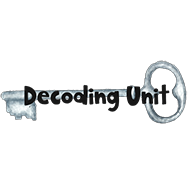
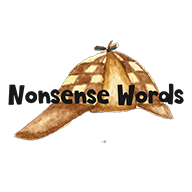


The Bravo! Decoder Pack Makes Decoding in Reading a Snap!
By using three multisensory methods, the Bravo! Decoder Pack shows kids with dyslexia how to decode words.

Decoding Unit:


Decoding Unit – the Bravo! Decoder Pack teaches your child how to master the use of decoding units. Each page of the Decoder Pack focuses on one phonemic or decoding unit of sound so your child will master it. The page is broken into three columns, each adding layers of difficulty to the decoding unit. This leads to sounding out multi-syllable words without guessing or other bad habits! By limiting one decoding or phonemic unit per page, your child doesn’t get overwhelmed!
Traditional programs don’t understand that dyslexic children need to master one skill before throwing more at them. The Bravo! Decoder Pack offers your child multiple routes and levels of practice so the single decoding unit is mastered.
Traditional programs expose your child to several decoding units without multi-sensory methods and movement. This doesn’t resonate with the dyslexic child! When taught the right way, kids with dyslexia retain information and are able to apply it to real life situations. This means they are able to read with fluency and comprehension.

Nonsense Words:


Nonsense Words – to keep your child from guessing at or memorizing words, the Bravo! Decoder Pack is rich with nonsense words. Using these meaningless words eliminates blind guessing at words, which directly affects reading comprehension and fluency scores. Your child needs practice decoding nonsense words along with multi-sensory methods of learning and movement to make decoding words a snap!
Kids with dyslexia crave meaning. It’s one of the ways that helps them navigate a sometimes “topsy-turvey” world. But sometimes, it backfires on them. Often, they are so eager to apply meaning to words while they read that they end up saying the wrong word. Or, they guess at the word because it’s easier to immediately find meaning – even if it’s the wrong meaning – than to take the time to sound out the word.
This is simply a bad habit and nonsense words help your child sound out words instead of guess at them because there is no meaning to nonsense words. Applying random meaning to words can’t be done if decoding skills are to be mastered.
The Bravo! Decoder Pack uses one nonsense word per page with multiple modes of practice so your child can be a Decoding Detective.

Story:


Story – the reader enjoys reading a short, often silly story rich with the decoding unit the page focuses on. Kids love putting their new decoding skills to work with the fun stories written in large print.
This is the first time your child will have the opportunity to use “real life” reading in the Decoder Pack. That’s because it’s vitally important to make sure decoding skills are strong before asking readers, especially those with dyslexia, to practice real life reading.
Too many mistakes can be made if your child doesn’t have strong decoding skills. For instance, if your child isn’t strong at decoding words and comes across a word that is unfamiliar, it’s too tempting to take a wild guess at the word.
Guessing isn’t reading. It has no strategy, and the problem with guessing is that usually, your child guesses wrong.
This isn’t an efficient method of decoding, either. Excellent readers are strong in phonemic awareness and attack a new, unfamiliar word one letter at a time, one syllable at a time, drawing on their massive wealth of strategies to sound out the word.
After a bit of time, automaticity sets in and your child is reading words without putting a lot of conscious effort into it!
A Sample Page from the Bravo! Decoder Pack
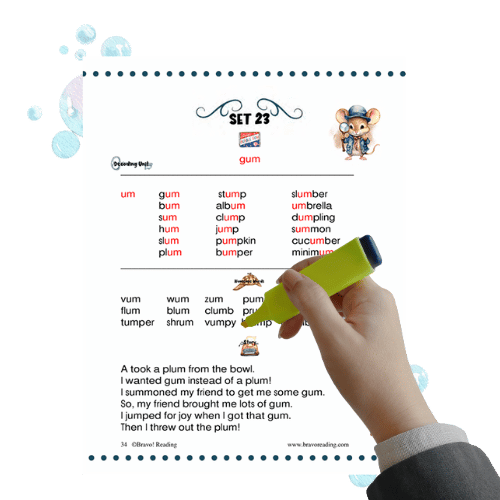
The Bravo! Decoder Pack – Makes Decoding In Reading A Breeze!
The Bravo! Decoder Pack introduces the decoding unit with a picture of the decoding unit right off the bat. Your child uses movement to help set in this sound unit with a wide-tipped marker.
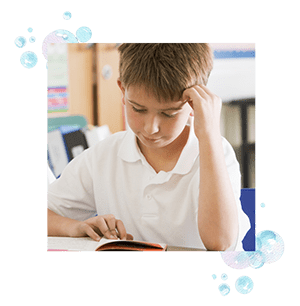
From there, your child moves to the first column of words. They are separated into decoding units along with letters to form words. This separation is important for kids with dyslexia, as breaking the word apart keeps them from guessing and also helps them focus on decoding instead of meaning.
The first row of words are easy, one-syllable words. Your child slides the marker (movement) over the colored portion of the “broken” word while saying the sound out loud (multi-sensory).
The second column introduces blends or two-syllable words. The process is exactly same, only the words are more difficult. If your child can’t yet read the middle row of words, that’s okay. Stay with the first column until skills are built up.
The third column introduces multi-syllable words. Because your child was able to start with easy words containing the decoding unit, building up to the multi-syllable words isn’t difficult. Once again, though, if the row is too difficult for your child, simply practice on the other two rows.
Why Larger Print Leads To Better Reading Scores
By slowly adding units of sound to the original phonemic unit, your child learns to sound out words and develop reading strategies. This prevents frustration, guessing at words, and avoidance tactics.

Next, your reader moves to nonsense words that follow the same pattern. Easy, one-syllable nonsense words are introduced, working up to multi-syllable nonsense words. Most reading programs don’t offer multi-syllable or longer nonsense words to your child. This is a mistake. Longer nonsense words help break the bad habits that get in the way of excellent reading fluency and comprehension skills!
Finally, your child reads a real story that is rich in the decoding unit. Word after word follows the decoding unit pattern, allowing your child real world word and sentence practice. Consequently, print remains large to ensure decoding success.
The Bravo! Decoder Pack is geared for older kids – those in grades two or higher, although if your child can sound out three-letter words with ease, then it can be used at any grade level or age.
How You’ll Receive the Bravo! Decoder Pack
You’ll receive your Bravo! Decoder Pack as a digital file. We strongly recommend that you print it off and have your reader use a wide marker to ensure movement while setting in strong decoding skills.
With that said, we know printing isn’t always an option, so you will have the capability to use your Bravo! Decoder Pack on a tablet or laptop computer.
A Sample Page from the Bravo! Decoder Pack
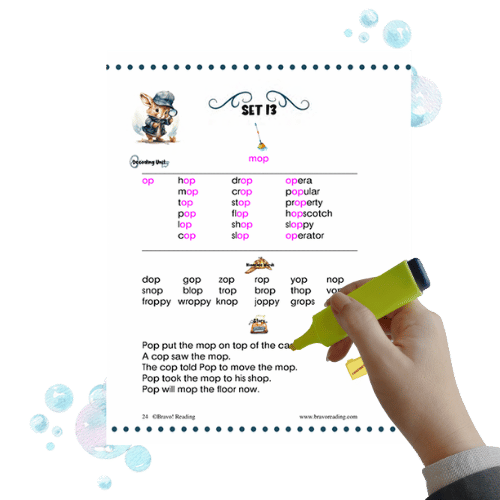
The Bravo! Money Back Guarantee
Bravo! Reading knows what it’s like to have a child with dyslexia. After all, Lisa Harp, the founder of Bravo! Reading originally developed this reading program to help her own son who had dyslexia. Within a year, he was an honor student!
Lisa brings this same methods to you so you can help your child. Whether you work with your child, hire a tutor to do so, or have a family member help out, we know the cost of not doing anything.When your child struggles to read, the world is bleak. When reading skills fall into place, a magical world opens up.
We also know the cost of panic decisions, and we know that Bravo! is a confidence decision.
Reading is a serious subject: Bravo! Makes It Fun!

Turning Tears To Sunshine The Bravo! Way
Bravo! Reading knows what it’s like to have tears instead of sunshine, fits instead of smiles. Books thrown aside and Kindles ignored. Bravo! knows what it’s like to have a child avoid reading at all costs, and we’ve gone the extra mile to fix that problem for you and your child.
Because of this, Bravo! offers a 100% money back guarantee.
If you aren’t happy with the Bravo! Reading Program, just let us know and we’ll happily refund your money, no questions asked.

